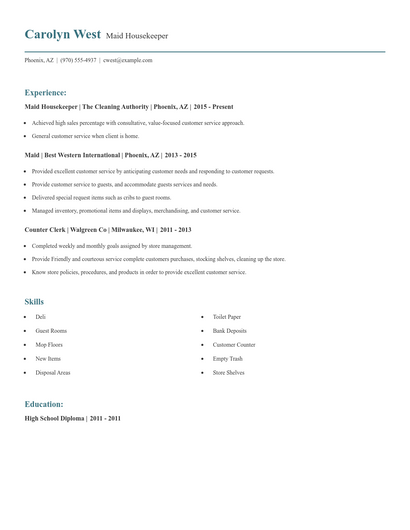
There are many important steps to take after an illness. These are some of the tips you should follow: Clean hard surfaces, use disinfectant wipes, deep clean common areas and use chemicals to kill germs. These steps will ensure that your home is clean and tidy before you know it. Keeping these tips in mind will save you time and money. These are some of the most crucial steps you need.
Cleaning hard surfaces
Cleaning surfaces that are frequently touched is crucial to stop the spread of germs. These germs can remain on surfaces for up to seven days. It is therefore important to disinfect surfaces as soon and as often as possible. No matter how close your family members are to it, hard surfaces can be a breeding ground for viruses and germs. You can disinfect surfaces like counters light switches, stairs railings and door handles with a disinfectant.
Cleaning surfaces with high touch is critical to avoid spreading germs after an illness. It is important to disinfect and clean bedding after an illness. The pillowcase is the most common contact point between a person and the pillow, so it should be thoroughly cleaned. Make sure you wash your pillowcases before they come into direct contact with your mouth. If the child is infected, use baby wipes to wipe the area.

Using disinfectant wipes
Using disinfectant wipes to disinfect sanitize a house after illness can be a great way to make sure your home is germ-free and free of allergens. You should remember that wipes do not serve as simple cleaners. They are registered pesticides with the EPA. They should not be used in close contact with children.
When using disinfectant wipes, always read the label. Protective eyewear and gloves are recommended before you apply the disinfectant to surfaces. Use bleach to clean surfaces. Rinse thoroughly with water. The bleach solution is extremely strong and should not be mixed with any other cleaning product. Children should use disinfectant wipes immediately after an illness. Always wear gloves, and afterward wash the surfaces with soap and warm water.
Common areas need deep cleaning
For preventing germ spread, it is important to clean common areas following an illness. While people should try to avoid touching these areas while sick, a germ-ridden individual will likely make trips throughout the house. Deep cleaning should include the bathrooms, kitchen, living rooms, bedrooms, hallways, as well as the bathroom. Lysol, a disinfectant spray, is available. A disinfectant spray formulated to kill bacteria or germs is also available.
Once you have found the source of the illness it is time to disinfect any affected areas. First, disinfect the area in which the illness occurred as well as the equipment used. All surfaces that were in direct contact with the student should be disinfected. This includes tables, chairs and floors. To clean surfaces, use an EPA-registered disinfectant.

Chemicals to kill germs
The latest in sanitation and cleaning is disinfectants. While soap and water are effective at killing germs, they are not as effective as stronger disinfectants. For example, bleach is more effective than rubbing alcohol or ethanol. To disinfect surfaces after an illness, chemicals should be used with care. It is essential to use gloves when handling strong bleach solutions.
It is important to disinfect surfaces. You also need to clean surfaces frequently touched with soapy water. This will help reduce germs on surfaces. For the best results, disinfectant must be applied to any high-touch surfaces such as doorknobs. The label should be read to determine which disinfectant is the best. You want to make sure that it kills 99.9% of germs.
FAQ
How can you keep your home smelling fresh even if you have pets
These are some tips to keep your home smelling amazing all day.
-
Use scented candles. You can use any type of candle you like, but scented ones are best because they smell nice without overpowering other aromas in the room.
-
Keep an assortment of air fresheners handy. They're cheap and easy to find at most stores. Spray them wherever people are spending time.
-
Make your own cleaning products. Homemade cleaners are better than store-bought ones because they don't contain harsh chemicals. Plus, you can see exactly what goes into them.
-
It is important to clean frequently. Clean surfaces less often, and you will be able to maintain your other items at their best.
-
Keep your eyes open for plants. The plants absorb odors and create a pleasant smell.
-
Try using essential oils. These natural scents add great character and aroma to your space.
Should you clean before a cleaner comes?
You should have a backup plan in case you need it. Cleaning service might arrive and discover that you have not prepared for the job.
This is the best way to avoid it. This could include a list of rooms, furniture, floors, carpets, etc. Make sure you also have a checklist of tasks for each item.
Also, you'll need to think about how much time it will take to accomplish these tasks. For example, in a large livingroom, you might focus first on the floor, followed by the walls.
It is important to have a time estimate for each task, and to stick with it. If you don’t have a time estimate for each task, the cleaners may leave the job after they finish half.
Many times we don't give our cleaners much direction when they come to clean our house. We expect them to use their knowledge to determine where we should go.
It is important to create a detailed plan that includes tasks and deadlines. By creating a detailed plan, you ensure that the cleaners have everything they need to perform the job properly.
What does a deep clean include?
A deep clean covers all surfaces: baseboards to walls, doors and windows. It includes mopping up, dusting off, mopping up, scrubbing and polishing.
Many companies also offer services like spring cleaning, pet care, and end-of-tenancy clean-up.
How often should I vacuum my house?
Vacuum at least once a week. Vacuuming can remove dirt from carpet and keep it looking clean.
How do I remove stains?
Food residues are often responsible for staining. Try soaking the area in water to remove them. You will see the stain disappear into the water.
Baking soda is also a good option to absorb the stain. Sprinkle baking soda on the area and rub the area gently until the stain is gone.
Statistics
- House cleaners on the lower end of that spectrum, the bottom 10% to be exact, make roughly $21,000 a year, while the top 10% makes $36,000. (zippia.com)
- The best-paid 10 percent make $34,000, while the lowest-paid 10 percent make $26,000. (zippia.com)
- A single-family home should cost $120 to $150 to clean, according to Home Advisor. (freshbooks.com)
- You should add 50 percent to cover these costs. (freshbooks.com)
External Links
How To
How to clean upholstered furnishings
Because of the complex structure of upholstered furniture, which has multiple layers and different fabrics, it is difficult to clean. It takes patience and skill. You can use steam cleaning or dry cleaning. Each method has its advantages and disadvantages. This article will cover how to clean upholstered sofas.
One of the most popular methods to clean upholstered furniture is steam cleaning. To remove dirt and stains from fabric, steam cleaning uses hot water combined with detergent. This method is most effective if there is no dust in your upholstery. If you find any dirt or moisture after the first cleaning, another cleaning solution should be used. If your upholstered furniture contains leather, you must avoid using steam cleaning solutions. Leather absorbs water and becomes soft so it cannot withstand heat. Also, leather is porous, so the steam may penetrate the material, causing damage.
Dry cleaning is ideal for upholstery that has only cotton or synthetic fabric. Dry cleaning removes stains and soils without damaging the fabric. Dry cleaning works well with light to medium soils like food residue, pet hairs, mud, paint, ink and grease. These types of stains can easily be removed by a vacuum that has a brush attachment.
Upholstering furniture made with natural fibers can be cleaned using washing. Washing usually involves soaking the fabric in warm water mixed with soap and mild detergent. After soaking the fabric in warm water, rinse it with cold water. You can gently rub the fabric with a sponge, cloth, or a towel. After rinsing the fabric, apply a small amount to the stain. Let the mixture sit for at least a couple of minutes before wiping it off. Finally, rinse the fabric. There are many shops that sell washable upholstery.
An easy homemade method to clean upholstery is possible. Mix 1 cup of vinegar, 2 cups of baking soda, and 1/4 cup of dishwashing liquid together in a bucket. Warm water can be used to fill the bucket up halfway. Allow the upholstery to soak overnight in this solution. Wash the fabric with cold running waters. This step should be repeated every two weeks to maintain a clean upholstery.
You can wax instead if chemicals are not your thing. Waxing protects upholstered furniture from fading and cracking. To prevent scratches, place a plastic wrap over the area where you plan to wax. Apply a thin layer of wax using a foam applicator. Wait until the wax dries completely. Then remove the plastic wrap.